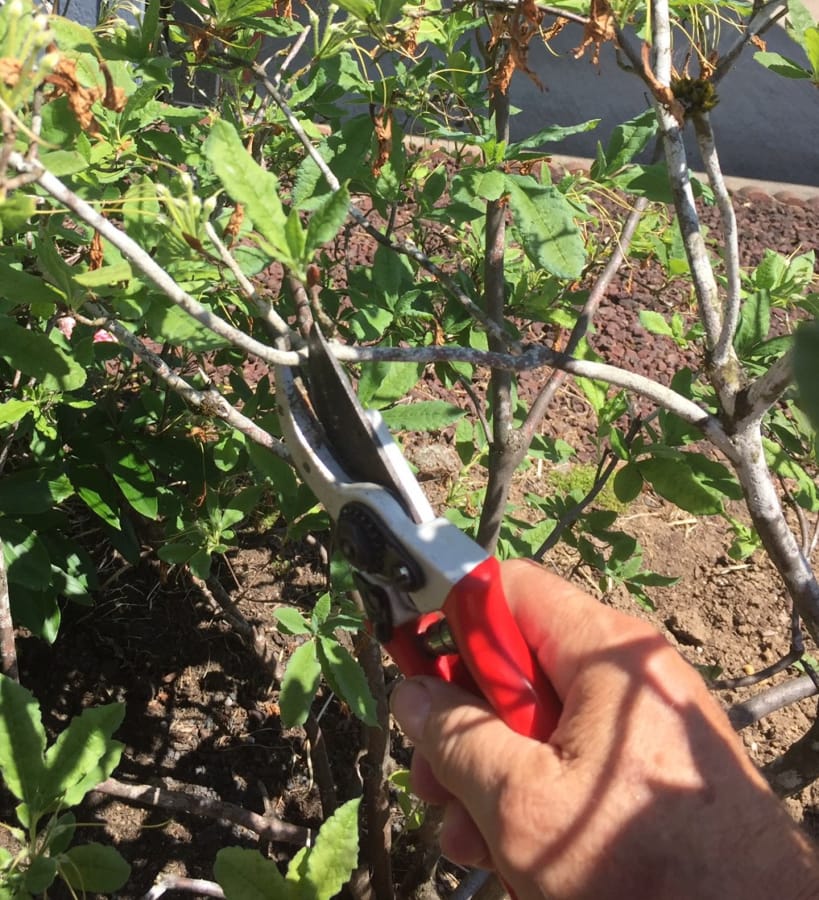Could you share with us how we can prune different kinds of shrubs to keep a natural look?
The most important pruning principle I have learned from pruning thousands of plants over many years addresses the question: What do I want this plant to look like after it regrows following pruning?
There are three types of pruning cuts, which each produce different plant regrowth responses.
- Pruning just above a bud. I refer to this as heading above a bud.
- Pruning just above a side shoot. I refer to this as heading above a side shoot.
- Removing a branch or shoot back to its origin. This is commonly referred to as thinning.
Heading above a bud
When a shoot is shortened by pruning just above a bud, most plants respond by producing 3 or more shoots where one grew before. This response is based upon the principle of terminal dominance. The top bud sends the plant hormone auxin down the shoot, which inhibits lower buds from growing. When this top shoot is removed, the inhibition is removed and several lower buds grow. Heading above a bud thickens the growth or makes it more dense. Two specific examples are pinching and shearing.
When we break off a piece of stem with our fingers just above a leaf we are pinching. Whenever shears or power clippers are used, 95 percent of the cuts are above a bud. This results in three or more times as many shoots. After two shearings, we get nine times as many shoots. Three shearings result in 27 or more times as many shoots. This is the kind of dense growth we want in hedges, so we normally shear them.



